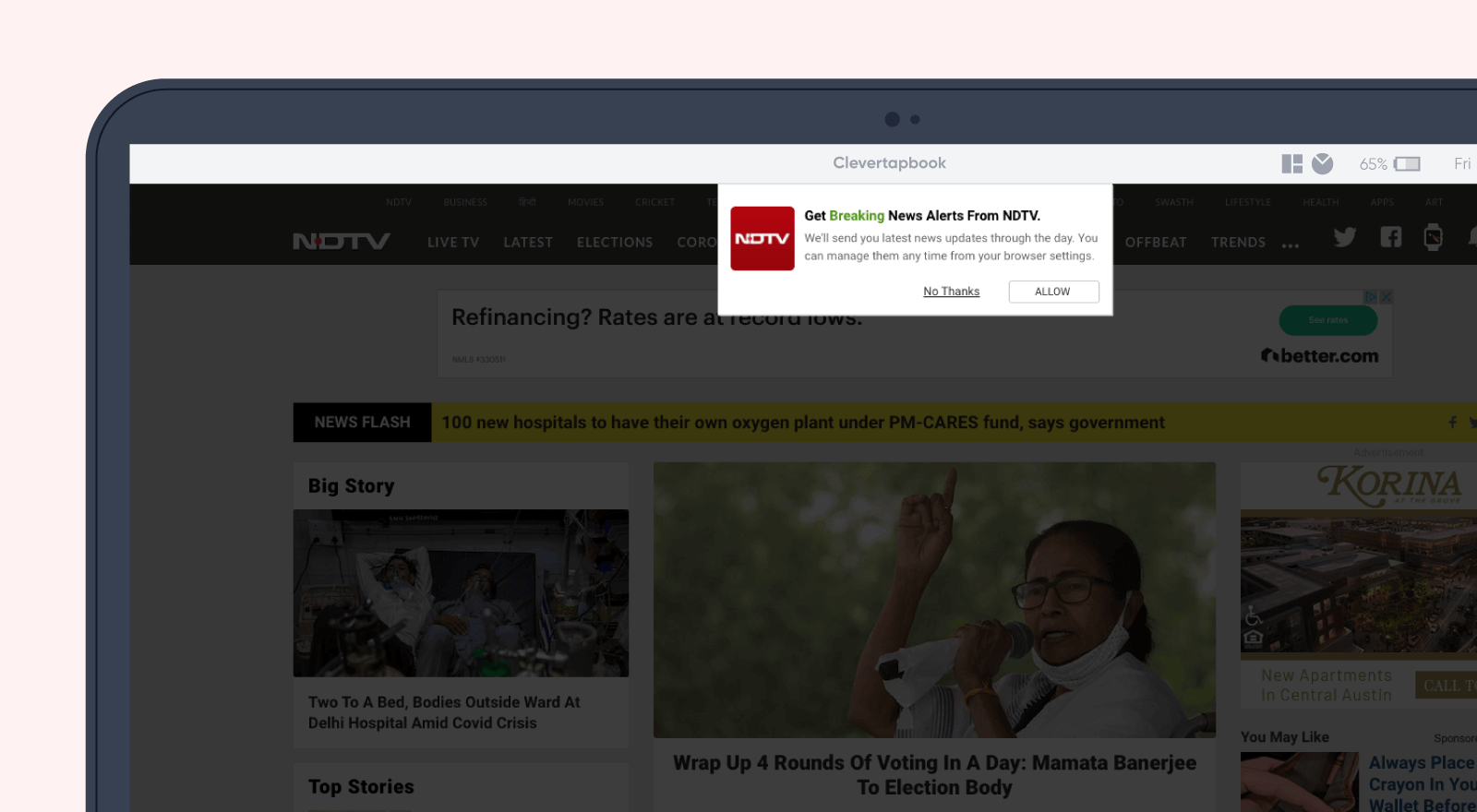Learn how you can Unlock Limitless Customer Lifetime Value with CleverTap’s All-in-One Customer Engagement Platform.

User engagement is the ultimate metric for measuring the success of a digital brand. Crafting innovative methods to reach current and prospective users with timely and contextual messages is a constant challenge. Browser notifications have proven to be a game-changer in this quest for engagement and have changed the way brands interact with their customers, allowing brands to reach out to users in real time and creating an engaging experience for them.
Browser notifications, also known as web push notifications, are actionable messages and prompts, sent by web applications and websites to the user’s browser. It happens while the user is active and when the user has granted permission to receive them. Browser notifications are contextual, timely, personalized and apt to engage and retain website visitors.
Let’s further explore the power of browser notifications and their significant impact on user engagement.
The most noteworthy advantage of browser notifications is instantaneous engagement. Unlike push notifications or emails, browser notifications appear on a user’s screen in real time. This immediacy can be effective in capturing the audience’s attention swiftly. For example, sending users a reminder about the cart they abandoned in real time and nudging them to complete the transaction can increase conversion and revenue.

The power of personalization lies in its ability to make users feel understood and valued. When users receive notifications that are relevant and tailored to their interests, they’re more likely to engage, leading to higher CTRs and increased customer satisfaction. Browser notifications can be highly personalized by segmenting the audience by behavior, preferences, and interest.
Picture this: a user visits your ecommerce website and browses through the women’s footwear section, spending a considerable amount of time looking at black heels and even adding a pair to the wishlist. Personalization enables brands to send highly relevant browser notifications—such as promotions on black high heel shoes—or create a sense of scarcity and urgency by notifying the user about the availability of the last few pairs. Nothing like a little well-placed FOMO for aiding conversion.
Shopping cart abandonment is a huge challenge for digital businesses. Browser notifications can be a potent tool to deal with such unfulfilled carts and reduce abandonment rate. Simply send a timely reminder or an offer to users incentivising them to complete their purchase. This one action can help boost sales and enhance the user experience by allowing users to pick up from where they left off.

Browser notifications aren’t just limited to transactional messages. They can be leveraged to drive traffic towards the website (or app) and enhance engagement. Marketers can use them to notify users with product suggestions, new blog posts, latest launches, upcoming events, or special promotions.
Consistently delivering relevant and informative content through notifications can be instrumental in drawing users back to the website, thereby boosting retention—especially since retaining existing customers is more cost-effective than acquiring new ones.
However, there are disadvantages that can affect a business adversely when it comes to browser notifications:
So you’ve got to use browser notifications wisely.
Here are some tips to help your brand optimize browser notifications for user engagement:
Browser notifications are a powerful tool if used efficiently to connect with users, deliver value, increase loyalty, and drive growth. However, they do require careful planning, testing, optimization, and evaluation to ensure their efficacy.

The Experience Optimization Pocket Guide